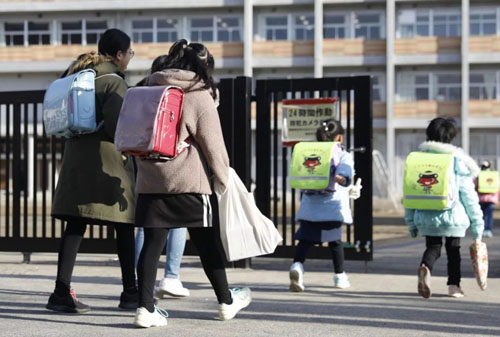by WorldTribune Staff, March 24, 2020
Health officials in Japan said the country has done “quite well” in getting the coronavirus outbreak under control. The state of emergency has been lifted on Hokkaido, the northernmost prefecture that was hit hardest by the outbreak.

A panel guiding Japan’s coronavirus response recommended late on Thursday that schools in some regions could be reopened and some sporting events could be resumed, but that large gatherings and enclosed areas that could reignite the contagion should still be avoided. Schools have been closed in Japan since early March.
Yoko Tsukamoto, a professor at the Health Sciences University of Hokkaido, said the number of new infections in Hokkaido had held steady and while everyone needed to be careful, it was important to “balance the concern over the illness with concern over people’s livelihoods.”
“My feeling is that we simply cannot live in a state of emergency indefinitely, so we try to go back a little closer to normal and, if infection rates go up again, then we have a rethink,” Tsukamoto said.
The panel of health officials said that the increase in cases appeared to be slightly decreasing.
“I think that the mindset of Japanese people, generally speaking, is to follow the government’s instructions in a crisis,” Kazuhiro Tateda, president of the Japan Association of Infectious Diseases, told the South China Morning Post.
“That’s a characteristic of Japanese people and you might call it a ‘sheep mentality’, but in this case it has been helpful. Citizens were worried and they did what they were told – they wore face masks to prevent the illness spreading, they washed their hands, they gave each other space on trains, they worked from home and they tried to minimize contact with other people.”
Tateda added: “We are getting to the point at which we can say that, generally, it is under control. But we do recognize that there are some areas – Aichi and Hyogo Prefectures, as well as Tokyo – where there have been some unlinked clusters, and that is, of course, a concern. Otherwise, it is going quite well – but we still have to be careful for another couple of weeks or more.”
There is another possible explanation, however, Tateda believes.
“It is possible that most people have already been infected with the virus and that the majority of the population has built up a herd immunity,” he said.
“These people may have been infected insidiously and have no symptoms at all, or perhaps just the symptoms of a mild cold. That is something that we will need to look into in the future.”
Japan’s government introduced a ban on foreign visitors from Hubei province on February 1 and the number of South Korean tourists was already sharply declining from 2019 amid heightened trade and political tensions. Travel bans have since increased globally, with Japan expanding its restrictions on travelers on Thursday. Those arriving from 38 countries, including all 27 European Union member nations, will have to quarantine themselves for two weeks.
Intelligence Brief __________ Replace The Media
